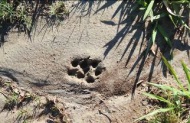 This program is designed to have students investigate the local environment in order to increase their understanding of the natural world and the relationships between plants, animals and their environment.
This program is designed to have students investigate the local environment in order to increase their understanding of the natural world and the relationships between plants, animals and their environment.
The focus of the program will vary according to the year level/s, and may include the differences between living and non-living things, life cycles, food webs and human and natural impacts on the environment. Scientific equipment used may include digital microscopes, iPads, binoculars, tracking boards and magnifying viewers; and students may participate in simulation games e.g. Survival of the Fittest. During the evening students may view nocturnal native species as they move around their natural habitat.
The program culminates with students participating in a revegetation project to provide habitats for local animals.
Australian Curriculum links
Science
Year 4
Living things have life cycles (ACSSU072)
Living things depend on each other and the environment to survive (ACSSU073)
Science knowledge helps people to understand the effect of their actions (ACSHE051) and (ACSHE061)
Year 5
Living things have structural features and adaptations that help them to survive in their environment (ACSSU043)
Scientific knowledge is used to inform personal and community decisions (ACSHE081) and (ACSHE100)
Year 6
The growth and survival of living things are affected by physical conditions of their environment (ACSSU094)
Scientific knowledge is used to inform personal and community decisions (ACSHE081) and (ACSHE100)
Sustainability
Systems
OI.2 All life forms, including human life, are connected through ecosystems on which they depend for their wellbeing and survival.
Futures
OI.7 Actions for a more sustainable future reflect values of care, respect and responsibility, and require us to explore and understand environments.
OI.9 Sustainable futures result from actions designed to preserve and/or restore the quality and uniqueness of environments.
Critical and creative thinking
Level 3
Pose questions to expand their knowledge about the world.
Level 4
Pose questions to clarify and interpret information and probe for causes and consequences.